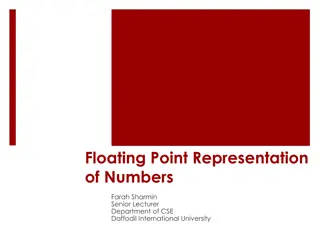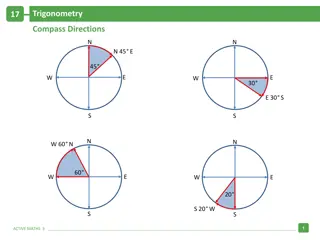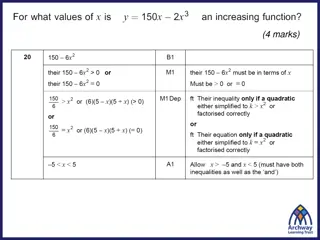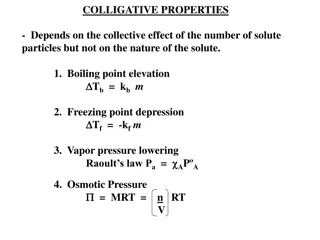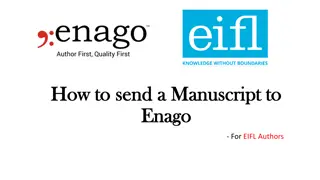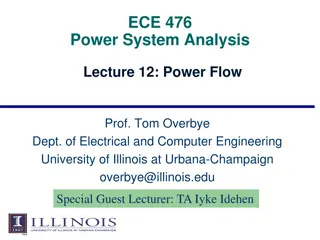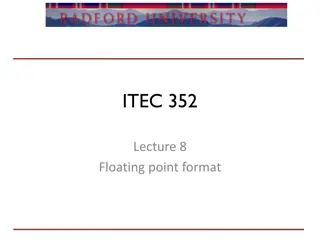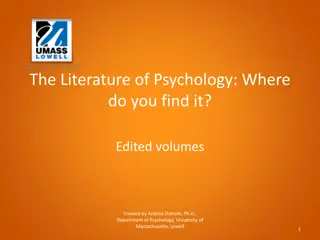
Changing Nature of Families: Trends and Impacts
Explore the shifts in family dynamics over the past 30 years, including the rise of divorce, cohabitation, and step-families. Learn about the complexities faced by children and adults due to these changes and the evolving roles of fathers and grandparents in modern families.
Download Presentation

Please find below an Image/Link to download the presentation.
The content on the website is provided AS IS for your information and personal use only. It may not be sold, licensed, or shared on other websites without obtaining consent from the author. If you encounter any issues during the download, it is possible that the publisher has removed the file from their server.
You are allowed to download the files provided on this website for personal or commercial use, subject to the condition that they are used lawfully. All files are the property of their respective owners.
The content on the website is provided AS IS for your information and personal use only. It may not be sold, licensed, or shared on other websites without obtaining consent from the author.
E N D
Presentation Transcript
Chapter 5 The Changing Nature of Families
Divorce, separation and step-families The family lives of children and adults have become increasingly complicated in the last 30 years. This complexity is due to a number of changes, such as: high rates of children born outside of marriage; growth of cohabitation; delays in the timing of marriage; high rates of divorce; and high levels of re-partnering and the birth of children from multiple partners.
Step-families The prevalence of separation and re-partnering in contemporary societies has resulted in different family configurations. Knowles (2013) suggests that step-family refers to those in a family relationship because of marriage rather than because there is a biological connection. Adults in step-families may try to maintain a large number of family ties originating from the previous marriages, or they may limit the recognition of their family to the members of their new household (Castr n and Widmer, 2015). This has implications for the children where they may have limited contact with relatives involved in the previous marriage.
Fathers and families Ihmeideh (2014) reports that fathers were often referred to as the invisible parents or the hidden parents in any writing about parenting. Yet fathers are significant and important members of the family. The modern-day father has moved beyond the breadwinner s role to a much more involved role. Instead, the modern father will assume multiple roles including breadwinner, carer and educator (Morgan et al., 2009). Fathers are more involved in physical play and exploration as well as outdoor games and sports. So they are operating more as an exploration partner , encouraging children in risk-taking and physical challenges (Newland et al., 2013).
Father involvement Father involvement is often perceived as direct interaction with the child. However, Pleck et al. (1985) suggests that real involvement also includes accessibility (the time that the parent is accessible to the child but not interacting with them directly) and responsibility for planning and arranging activities for their child and taking care of the child s needs. There have been conflicting views of fathers in policy and in the media. Many of these views positioned fathers as unwilling or unable to support and nurture their children. This deficit approach has been replaced with a generative discourse which sees men as both willing and able to be involved with nurturing their children (Potter et al., 2013)
Grandparents and families There are 14 million grandparents in the UK today. Half of these grandparents are under the age of 65 and 10% are aged under 50. Recent studies have shown that the average 10-year-old child has three living grandparents (Grandparents Plus, 2011). Grandparents can often live in three-generational households which comprise of grandparents, grandchildren and at least one of the children s parents. They can also live in skipped generational households which consist of grandparents and grandchildren but without the children s parents (Glaser et al., 2014).
The role of grandparents in families Research indicates that grandparents have a variety of functions within families and in the lives of their grandchildren. They are referred to as family watchdogs, protectors, confidantes, valued elders, connectors, mediators and benefactors. these terms suggest an instrumental role in providing physical, financial or emotional support as an additional layer to that provided by parents. In China, grandparents are seen as family maximisers , and it is estimated that 58 million Chinese children are left behind and raised by grandparents as their parents relocate to the city for work, thus creating greater economic security for the whole family (Baker and Silverstein, 2012). All of
Supporting refugee and asylum seeking families and children It is claimed by the UN Refugee Agency that more people than at any other time have been forced to flee their homes and seek refuge elsewhere due to wars, conflict and persecution. There were 59.5 million people forcibly displaced by the end of 2014, compared to 37.5 million a decade before. The war in Syria is the world s displacement. The UN High Commissioner of Refugees claims we are witnessing a paradigm change and an unchecked slide into an era in which the scale of global forced displacement is dwarfing anything seen before. single largest driver of
Definitions of terms Refugees are fleeing from war and persecution in their own countries and they can cross borders into other countries to seek sanctuary and assistance from organisations. The term asylum seeker is someone who says he or she is a refugee, but whose claim has not yet been evaluated. In the UK, a person is officially a refugee when they have their claim for asylum accepted from the government (The Refugee Council, 2015). Immigrants are people who have citizenship in one country but who come to another country with the intention of living there. They are not moving because of persecution or armed conflict, but rather they choose to move for a variety of reasons including finding work, education, or joining family members. those countries and other
Supporting refugee and asylum seeking families and children Refugee families cannot be considered as an homogenous group and have very complex lives. This can be understood better by considering a range of pre-migration, trans-migration and post- migration factors (Hamilton and Moore, 2004). Pre-migration factors relate to the experiences of the family before leaving the home country such as parents educational status and profession, housing, health and well-being. Trans-migration factors include traumatic journeys to escape conflict, border crossings and time spent in temporary refugee camps with inadequate shelter, food, water, medical aid or education. Post-migration factors include time spent in holding centres, being sent to unknown areas to live, separation from or bereavement of family members, poverty and adaption to the new environment which includes homes, schools and cultures (Whitmarsh, 2011).
The importance of the educational environment for refugee children Schools facilitate contact with the local community; reintroduce a sense of normality and routine; provide a safe environment; increase self-reliance and foster social (Ba kov , 2011). However, research has identified key barriers to this happening in practice: The schools lack of information about the children including information on children s previous educational history. Insufficient teacher experience different cultural backgrounds. Insufficient cooperation between schools, parents and social workers because of language barriers and time. Insufficient funding, support provision and resources in schools. and intellectual development on teaching children from
Working with LGBT families Some legal changes The last 50 years have seen huge changes in both the legal system and social acceptance of homosexuality in the UK. Homosexuality was still illegal in England and Wales until 1967. In Scotland and Northern Ireland it was illegal until 1980 and 1982 respectively. The Civil Partnership Act came into force in the UK in 2005 allowing same- sex couples to form civil partnerships. The Marriage (Same Sex Couples) Act 2013 in the UK allowed the first same sex marriages to take place in England and Wales in March 2014. Scotland followed closely behind with the first same sex marriages taking place in December 2014. No legislation has been passed for same-sex marriage in Northern Ireland. Same -ex couples have had the right to adopt children since the introduction of the Adoption and Children Act 2002 in England and Wales, and the Adoption and Children (Scotland) Act 2007.
Research findings on LGBT families Many understandings of family that favour heterosexual families and silence other forms of families, such as those with gay and lesbian parents (Fox, 2007). This culture of heteronormativity can result in LGBT parents and their children feeling marginalised, ignored and silenced as their identity is not given any focus (Hegde et al., 2014). Teachers hold a positive attitude to homosexuality yet they are not always comfortable, nor do they feel prepared, to work with families with LGBT parents. Early childhood students have also been shown to hold positive attitudes towards homosexuality but, similarly, they do not feel comfortable interacting directly with LGBT parents but were willing to take action in their school or early years setting to help children and parents feel more accepted (Averett and Hegde, 2012). early childhood settings produce and reproduce
References Averett, P.E. and Hegde, A. (2012) School social work and early childhood students attitudes towards gay and lesbian families , Teaching in Higher Education, 17(5): 537 549. Ba kov , M. (2011) Developing inclusive educational practices for refugee children in the Czech Republic , Intercultural Education, 22(2): 163 175. Baker, L. and Silverstein, M. (2012) The well-being of grandparents caring for grandchildren in rural China and the United States , in S. Arber and V, Timonen (eds), Contemporary Grandparenting. Bristol: Policy Press. pp51 70. Castr n, A, and Widmer, E. (2015) Insiders and outsiders in stepfamilies: Adults and children s views on family boundaries , Current Sociology, 63(1): 36 56. Fox, R. (2007) One of the hidden diversities in schools: Families with parents who are lesbian or gay , Childhood Education, 83(5): 277 281. Glaser, K., Gessa, G. and Tinker, A. (2014) Grandparenting in Europe. London: Grandparents Plus. Grandparents http://www.grandparentsplus.org.uk/wp-content/uploads/2011/03/Policy-Briefing-01-paper-statistics- Feb-2011.pdf. Plus (2011) Policy Briefing Paper 01. Available at: Hamilton, R. and Moore, D. (eds) (2004) Educational Interventions for Refugee Children: Theoretical Perspectives and Implementing Best Practice. London: Routledge. Hegde, A.V., Averett, P., White, C.P. and Deese, S. (2014) Examining preschool teachers attitudes, comfort, action orientation and preparation to work with children reared by gay and lesbian parents , Early Child Development and Care, 184(7): 963 976.
References Knowles, G. (2013) Step-families and step-parenting , in G. Knowles and R. Holmstr m (eds), Understanding Family Diversity and Home-School Relations. London: Routledge. pp73 87. Ihmeideh, F.M. (2014) Giving fathers a voice: towards father involvement in early years settings , Early Child Development and Care, 184(7): 1048 1062. Morgan, A., Nutbrown, C. and Hannon, P. (2009) Fathers involvement in young children s literacy development: implications for family literacy programmes , British Educational Research Journal, 35(2): 167 185. Newland, L.A., Chen, H., Coyl-Shepherd, D.D., Liang, Y., Carr, E.R., Dykstra, E. and Gapp, S.C. (2013) Parent and child perspectives on mothering and fathering: the influence of ecocultural niches , Early Child Development and Care, 183(3 4): 534 552. Pleck, J.H., Lamb, M.E. and Levine, J.A. (1985) Facilitating future change in men s family roles , Marriage and Family Review, 9: 11 16. Potter, C., Walker, G. and Keen, B. (2013) I am reading to her and she loves it: benefits of engaging fathers from disadvantaged areas in their children s early learning , Early Years, 33(1): 74 89. The http://www.refugeecouncil.org.uk/policy_research/the_truth_about_asylum/the_facts_about_asylum. Refugee Council (2015) who? Available at: Who s Whitmarsh, J. (2011) Othered voices: asylum-seeking mothers and early years education , European Early Childhood Education Research Journal, 19(4): 535 551.




